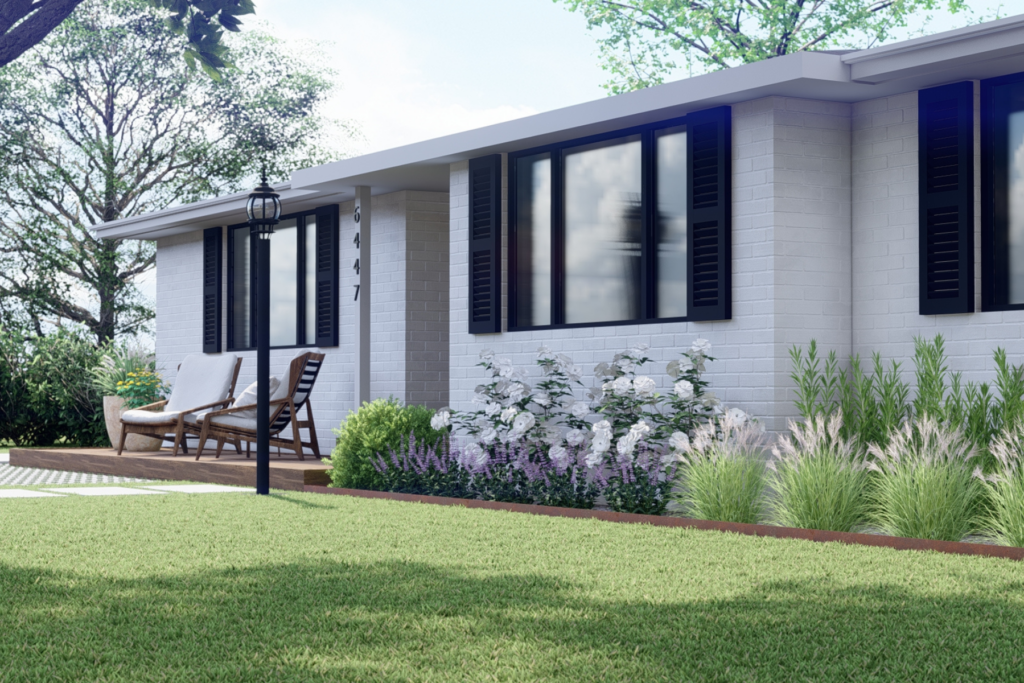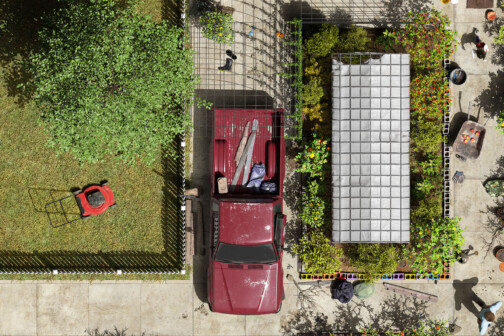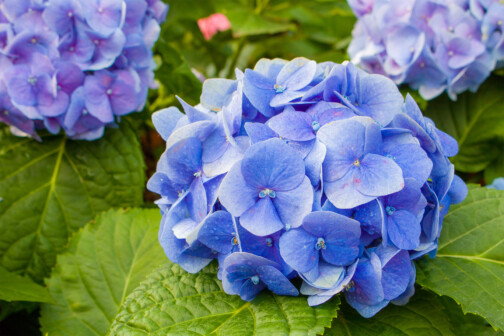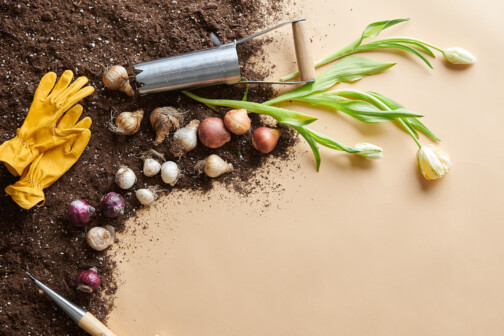After almost two months without any measurable rain in Dallas, there’s no doubt your yard is looking, well, crunchy. And while you can jealously covet your neighbor’s lush lawn—and wonder what kind of deal they made with the devil at the crossroads of, say, LBJ Freeway and Central Expressway—that won’t save that yellowing potential brush fire outside your house.
It’s probably too late to save your garden this season, but it’s never too early to start planning a drought-resistant yard you can enjoy for years to come. So, we talked to veteran landscape architect Cate Singleton, who’s the director of design for Tilly, a virtual landscape design service company.
Singleton, a longtime Dallas resident, gave us three pieces of advice:
- Reduce your lawn size.
- Pick native or adaptive plants.
- Retain site water.
Singleton says these concepts are the key to keeping your yard alive through the blazing summers and freezing winters, as well as to minimize your water consumption. We asked her to break them down even further.
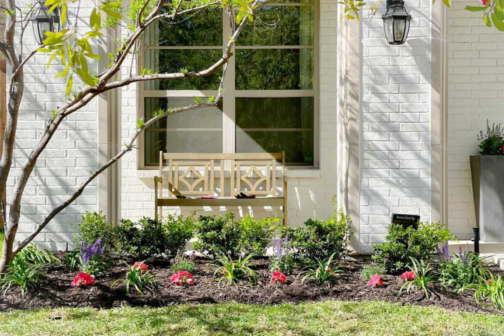
Reduce Your Lawn Size
“Turf grasses are the biggest water hogs in the landscape,” Singleton says. To save water, she suggests reducing the square footage of your grassy lawn and replace it with landscaped plant beds or gravel areas—like a firepit—that don’t require irrigation.
But what if I like grass?
Your lawn can also be replaced with other types of ground cover. Try frog fruit, which “we can use instead of turf in some areas,” Singleton says. The ornamental plant blooms in the summer and fall months but is generally evergreen year-round. Singleton also recommends buffalo grass, which is native, drought-tolerant, looks good in modern designs, and only needs mowing a couple of times a year. “It’s not necessarily something that you could play golf on or anything like that,” she says. “It’s definitely a longer grass, but it still takes foot traffic.”
But what if I don’t want to replace my lawn?
Water in the morning and deeply on whatever days you’re allowed, Singleton says, but you’re going to have to “embrace some dead grass throughout the summertime.”
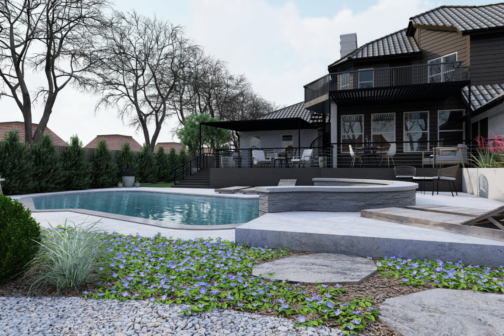
Pick Native or Adaptive Plants
If you want your plants to survive year after year, go for native or adaptive2 options. “These are just going to inherently do well in drought situations as well as the crazy freezes we’re getting in the wintertime now,” Singleton says.
What native plants should I plant in my yard then?
Start with canopied trees, like live oaks. They won’t give you “instant gratification,” but they’ll provide desperately needed shade in the long run and should be included in your plan, Singleton says. After you get your big trees in the ground, then you can set out some smaller, flowering ornamental plants, like desert willows, that “give you a focal feature in your garden.” You can also fill in beds with drought-tolerant perennials and ornamental grasses.
What are planting zones and why are they important?
The US Department of Agriculture has divided the country into 13 plant hardiness zones. Based on average minimum winter temperatures, these assigned regions can tell you which plants will thrive in your area. At nurseries, plants are labeled with their ideal zone number—this especially comes in handy with perennials. Dallas is in Zone 8A, but Singleton says there’s some wiggle room. She will design yards with plants down to Zone 7—Oklahoma—to get hardiness during cold snaps and deep freezes and up to Zone 9—think South Texas and the Gulf Coast—to accommodate the intense summer heat. “But,” she says, “if you just search your area by planting zone and the natives for your area, that gives you really the best the best information.”
Will my native plants survive a cold snap?
“The majority of the plants I’ve seen that we’ve lost are things that grow in California and probably shouldn’t be planted here,” Singleton says. Native plants should come back after a hard freeze. But you want to make sure your plants retain moisture—regular maintenance and mulching helps, especially with protecting the root system. For more delicate plants, like agaves and palm trees, you can cover them with blankets.
When is the best time to plant new materials in my yard?
You should plant new trees and other plant materials in the fall, Singleton says. This gives the plants enough time to establish and put down roots before the spring growing season. “And then they can spend spring growing instead of establishing, and once plants are established, that’s when the drought tolerance really kicks in.”
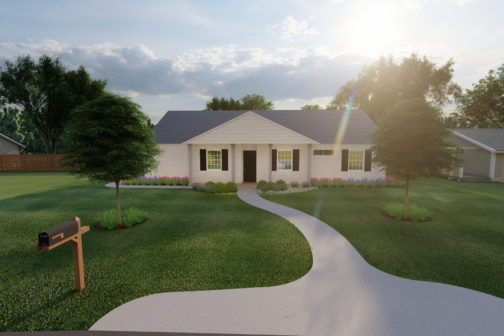
Retaining Site Water
For years, Dallasites have worked to get excess water off their property, however, “I think it’s a missed opportunity to actually use that water in supplemental ways to water your landscape,” Singleton says. You can collect rainwater in catchment systems, but Singleton suggests swales or pop-up emitters.
What are swales?
A swale is a shallow ditch on your property where water naturally drains. You could dig one yourself, but Singleton prefers to use what already on your property, like a dry creek bed. She likes using swales to redirect runoff water to your flower beds. Plus, they’re a great way to incorporate a water feature in your yard. “You can fill them with varying sizes of river rock and some boulders,” Singleton says. “You can even pop some plants around the edges there to make it look like a really naturalistic setting.” The rocks will slow the water’s flow, allowing it to percolate in the ground. Whatever’s remaining will then water the plant beds at the swale’s destination.
What are pop-up emitters?
When it rains, water flows through a vertical downspout on your house to an underground pipe that then carries the water away from your home. When enough water has built up in that drainage pipe, the emitter’s lid pops up and disperses the water above ground. Often this emitter is near the street or is just far enough away to protect your foundation. However, Singleton thinks you can strategically place the emitter in your yard to act like a natural water sprinkler for your plant beds. It’ll fill with water, “then once it’s full, the lid pops up on it and then the water is allowed to sheet drain across your lawn.”
Get the AtHome Newsletter
Author



